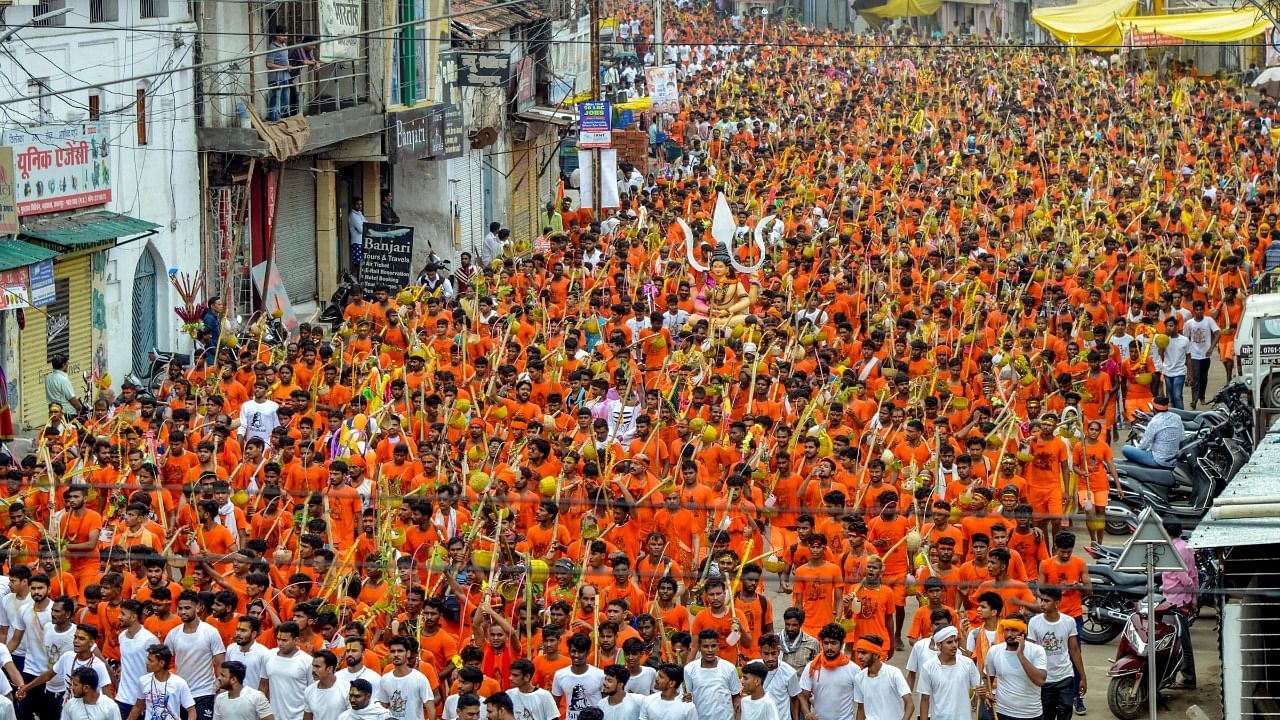
Uttar Pradesh's decision to allow the annual Kawad Yatra at a time when the third wave of Covid-19 looks imminent has set alarm bells ringing. While Uttarakhand has cancelled the Kawad Yatra, the UP government's diametrically opposite decision has raised fears that the pilgrimage may become a Covid-19 super-spreader event. The Supreme Court has asked UP to reconsider its decision. Here's what you need to know about the Kawad Yatra:

What is the Kawad Yatra? When and how did it start?
The Kawad Yatra is a centuries-old pilgrimage undertaken during the Hindu month of Shravana. This year, the month starts on July 25 and ends on August 22.
According to Hindu mythology, the beginning of the Kawad Yatra can be traced to the "churning of the ocean of milk", during which poison was released before 'Amrita' (nectar). Hindu deity Shiva consumed the poison to save mankind but it filled him with negative energy. Ravana, the king of demons and a 'shivbhakt', brought the Ganga water in earthen pitchers and poured it on the 'Shivlingam' to help Shiva release the negative energy.
The Kawad Yatra was initially undertaken by seers and ascetics but it became popular with the passage of time. According to an estimate, more than three crore people filled their pitchers with the Ganga water from Haridwar alone in 2019.
What do the pilgrims do during the Kawad Yatra?
The pilgrims, called Kawadias, carry the Kawad, which is a single pole usually made of bamboo with two almost equal loads dangling from the opposite ends. It is slung across the shoulders of Kawadias.
The yatra usually begins from Gaumukh (the glacier where River Ganga originates), Gangotri, Rishikesh and Haridwar — all in Uttarakhand. The Kawadias fill their pitchers with the Ganga water and offer it at Shiva temples in over a dozen districts in western UP.
In eastern UP, Kawadias fill their pitchers with the Ganga water from Prayagraj, Ballia and a few other districts, and offer it at the Kashi Vishwanath Temple in Varanasi.
Does the government organise the Kawad Yatra?
No, the government does not organise the Kawad Yatra. The Kawadias undertake it on their own, although there are Kawad Sanghs which go on the pilgrimage in groups.
Why has the Kawad Yatra acquired a political colour this year?
While the Kawad Yatra is the largest annual religious gathering in UP, it acquired a political colour only after Yogi Adityanath, the 'mahant' (religious head) of Gorakhnath Peeth in Gorakhpur, became the chief minister in 2017.
The Kawadias faced restrictions during the non-BJP governments. Under Adityanath, they suddenly became VIPs, and the government machinery went out of its way to welcome them. The Kawadias were even allowed to use the DJ, which was banned by the previous SP government because the loud music often led to communal clashes when they passed through Muslim neighbourhoods or mosques during Namaz.
The government set up roadside camps where Kawadias could take rest and have meals, and got helicopters to shower flower petals on them.
Why is UP allowing it when the third wave of Covid looks imminent?
Political observers say the BJP does not want to give an impression that it is against the Kawad Yatra lest it receives a backlash from its Hindu vote bank. "The BJP cannot afford such a backlash so close to the assembly elections,'' says a Lucknow-based political analyst. The assembly elections are due early next year.
The Opposition, too, is cautious in its reaction. ''The state government must ensure adherence to the Covid-19 protocol,'' said senior SP leader Anurag Bhadauria.
UP Health Minister Jai Pratap Singh has promised to "strictly implement" the protocol.